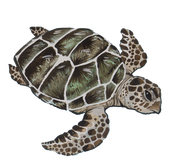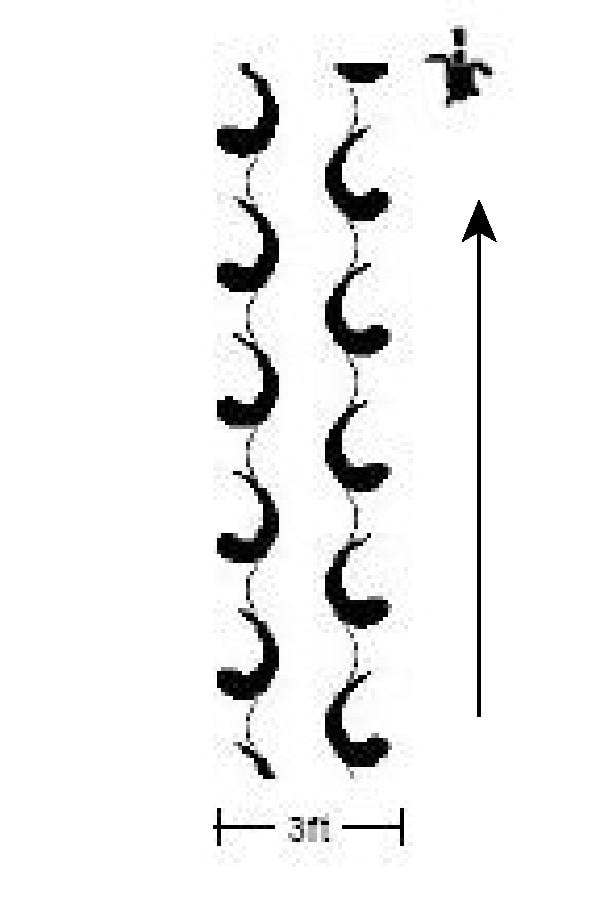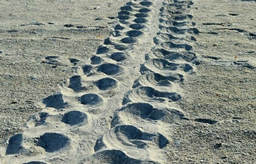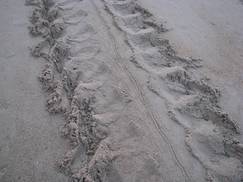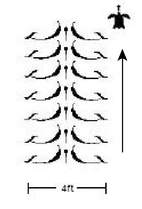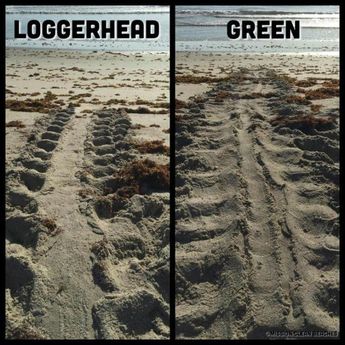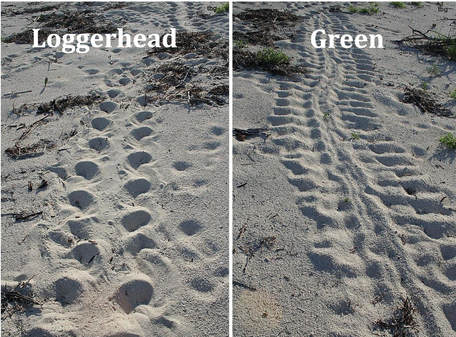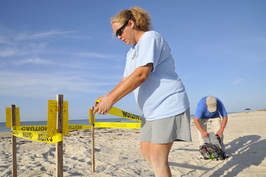
Imagine walking along the beach one morning and seeing tracks in the sand left by a sea turtle!
Volunteers who patrol beaches to protect sea turtle nests look for those same tracks. If they find them, they mark the nest to prevent people from disturbing the eggs. The signs also include a series of letters or symbols recording the date the eggs were laid, and the species of turtle nesting at the site.
These volunteers need to know which species dug the nest only by seeing the tracks in the sand! Each species has a distinct trail because of different ways of moving through the sand. On this page, you will learn to tell the difference between sea turtle tracks in the sand. You can then take a quiz to practice identifying turtles by their appearance, and by their tracks.
Volunteers who patrol beaches to protect sea turtle nests look for those same tracks. If they find them, they mark the nest to prevent people from disturbing the eggs. The signs also include a series of letters or symbols recording the date the eggs were laid, and the species of turtle nesting at the site.
These volunteers need to know which species dug the nest only by seeing the tracks in the sand! Each species has a distinct trail because of different ways of moving through the sand. On this page, you will learn to tell the difference between sea turtle tracks in the sand. You can then take a quiz to practice identifying turtles by their appearance, and by their tracks.
Identifying Sea Turtle Tracks
For this activity, you will only see examples of tracks from Loggerhead and Green Sea Turtles. These are the most common species to nest on the Florida Gulf Coast. Only female sea turtles come to the beach to nest, and they pull themselves through the sand with their front flippers. For a large animal - 350-400 pounds! (160-180 kg) - this is hard work, and the effort leaves deep tracks in the sand.
|
Loggerhead Turtles
Loggerheads pull themselves through the sand with alternating motion - they pull with a flipper on one side, then they pull on the other. The results is a set of comma-shaped scoop marks that do not line up evenly on the two sides. The center is mostly smooth, with marks from the turtle's tail dragging in the sand. See the images below for a diagram and a photograph. |
Green Turtles
Green turtles drag themselves through the sand by pulling with both flippers at the same time. Their tracks show straight flipper marks that line up in pairs. They look like tank or bulldozer tracks. In the center of the trail, you will usually see a line left by the tail, including marks left by the point of the turtle's tail. See the images below for a diagram and a photograph. |
